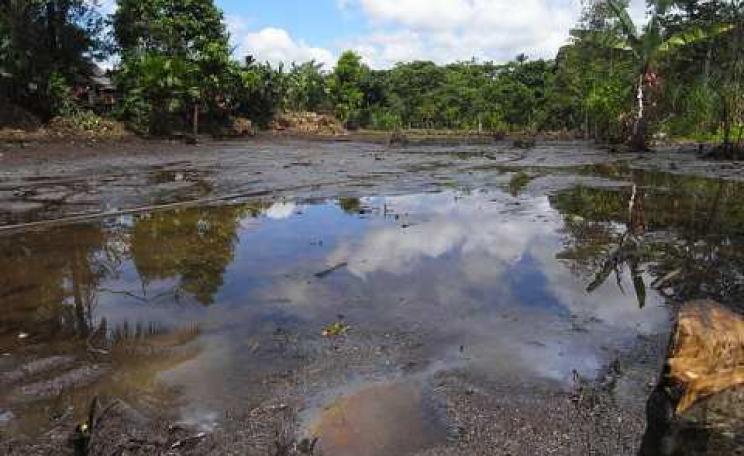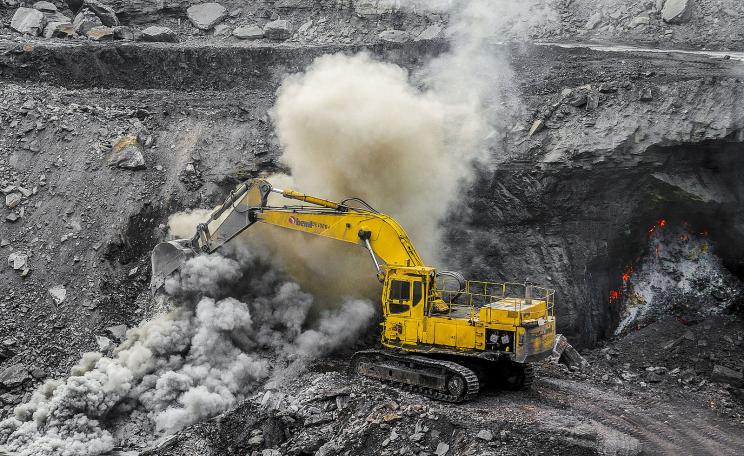If all the target does is lead to a situation where we're scratching around trying to find places that count and looking at how we can massage criteria to get to 30 per cent - who cares?
The UK Government is currently way off track on its own target to protect 30 per cent of its nature by 2030 - despite committing to this goal through an international deal agreed in Montreal in 2022.
There has been "little or no change" in the extent of land protected under the UK’s network of Sites of Special Scientific Interest (SSSI) and their condition in England has deteriorated, according to a report on the government’s progress towards its environmental targets published this week.
There was also a lack of appropriate monitoring of sites outside this network, which limited the extent to which progress could be measured, the report noted. The government’s plans to recover nature in national parks and areas of outstanding natural beauty had the potential to contribute to the 30 by 30 target, but action is too slow.
Land
The government has also failed to announce its plans to take forward recommendations of a major review of protected landscapes published in 2019, despite consulting on it early in 2022.
At sea, the government increased protected areas by designating 41 sites in 2019. However, there is a lack of detailed information on the current state of the areas, and how the government will improve them.
“Government should urgently set out its detailed plan for achieving the ‘30 by 30’ commitments,” the report concluded.
The conclusions mirror those of environmental campaigners, who estimate that just three per cent of UK land, and eight per cent of its seas, are properly protected for nature. The estimate by the Wildlife and Countryside Link (WCL) counts only land that is not only designated as protected, such as SSSIs, but that is also already in good condition.
It does not count sites that are protected on paper but that have not shown signs of improvement in years. If these were improved, the UK’s total land that would count towards the target would reach eight per cent, while for seas, it would reach 40 per cent.
Timetable
A separate report by nature experts at the International Union for the Conservation of Nature (IUCN) - of what already counts towards the UK’s target and what could and should - was published last December. It also painted a damning picture of progress since its last report in 2014.
If all the target does is lead to a situation where we're scratching around trying to find places that count and looking at how we can massage criteria to get to 30 per cent - who cares?
Some sites that did qualify as protected areas in 2014 no longer meet the international standard, including Areas of Outstanding Natural Beauty, National Nature Reserves, National Parks, UNESCO Biosphere Reserves and UNESCO World Heritage Sites.
Though these areas could count, the assessment reveals that there is no evidence that they are effectively managed for nature, nor that the designation in itself prevents practices that are harmful to nature, it says.
The government has pledged to give protected landscapes a new legal purpose to recover nature, to tackle climate change and improve people’s connection to nature, with targets and requirements for public authorities. However, this has not happened.
The government has not made promised regulations requiring authorities managing protected landscapes to contribute to environmental targets, nor given a timetable for doing so.
Ecosystems
The government announced the launch of a search to identify a new national park, alongside a package of other policies for nature, in December.
Steve Barclay, the secretary of state for the environment, said at the time: “The policies announced today will bring government closer to meeting the commitment to protect 30 per cent of the UK’s land by 2030, as the government prepares for COP28.”
However, though a new national park could be important, the government needs to do the basics, not just “go for the shiny”, according to Oliver Newham, the policy and advocacy lead at charity Rewilding Britain.
“There's no point in focusing on creating a new national park and not ensuring that you're resourcing, supporting and enabling those national parks and national landscape that are there already needing to deliver,” he said.
Richard Benwell, chief executive of the WCL, stressed that the whole point of the target to protect 30 per cent of nature by 2030 was to drive restoration of species, and to bring habitats and ecosystems back into good condition.
Habitats
“If all the target does is lead to a situation where we're scratching around trying to find places that count and looking at how we can massage criteria to get to 30 per cent - who cares?” he said.
The question was really over what new legal protections were needed to make the UK’s network of sites function properly, he said. This would mean new regulation to prevent problems such as water pollution at source, and around £1 billion a year in capital investment.
Newham pointed to good work underway in many national parks to restore nature, such as a project by Northumberland National Park Authority to prioritise nature on a 200ha site it owns around Greenlee Lough, the largest natural water body in Northumberland.
The authority will restore peatlands, renaturalise watercourses, plant trees and create habitats to create conditions for wildlife and plants to thrive.
Paper
In December, the government published its own assessment of what UK sites could count towards the 30 per cent target. It claims that 8.5 per cent of England currently contributes towards the 30 by 30 target, including Sites of Special Scientific Interest (SSSIs) and National Nature Reserves.
A further 26.8 per cent of land has the potential to be counted towards the target in future, including local nature reserves and natural world heritage sites, if provided with investment, and supported by landowners.
Other potential areas could be privately owned areas, such as those managed by conservation organisations such as the RSPB and Wildlife Trusts, it said.
James Robinson, chair of IUCN UK and chief operating officer at the RSPB, said that overall, the government’s assessment of what should and should not count towards its 30 per cent target was “moving in the right direction”.
However, he added that it still had a lot of work to do to improve the management of areas so that they are protected in practice, not just on paper.
Progress
“The clock is ticking. The scale of work that needs to be done to make the 2030 deadline is challenging. It is achievable, but the government needs to make sure the resources are available for this to happen,” he said.
A spokesperson for Defra said: “We know that delivering the ambitious vision for our landscapes must be supported by action on the ground. That is why we are investing more than ever before in our landscapes and have clear criteria in place to ensure areas contributing towards our 30 by 30 target are effectively managed.
“Alongside this, we are designating new protected sites and ensuring there are safeguards in place to protect 30 by 30 areas from damage or decline.
"We will continue to work closely with farmers, conservation groups and local bodies to finalise the 30by30 criteria and drive further progress towards achieving this important target.”
This Author
Catherine Early is a freelance environmental journalist and chief reporter for The Ecologist. She can be found on X at @Cat_Early76.







